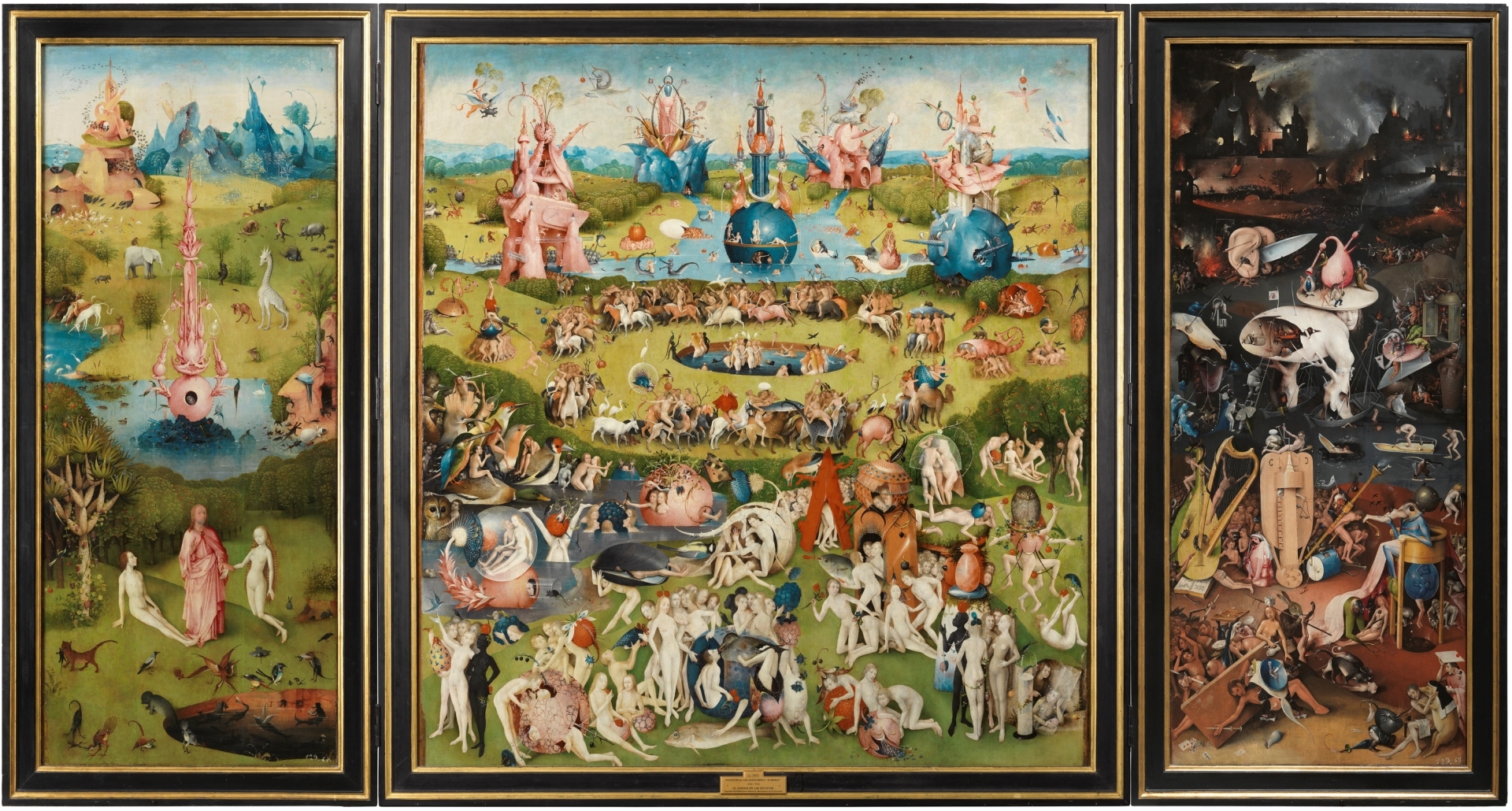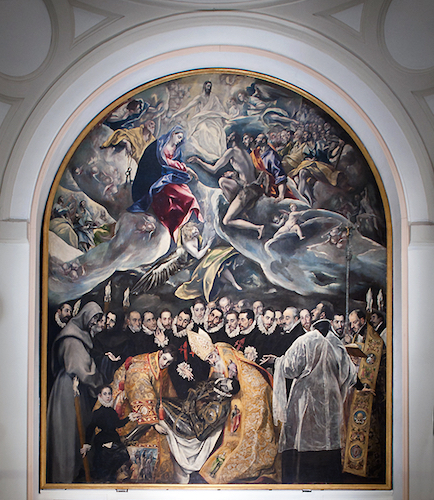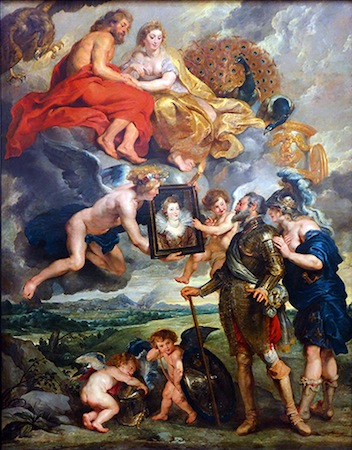This era had a great focus on depicting the important moments in biblical history, as society was heavily immersed in religion at this point in time. It is a bit ironic, though, because many of the most known pieces of this time are laced with ego. Besides self-portraits, it was common practice for patrons and donors to insert themselves in these divine images. The Mérode Altarpiece Triptych by Robert Campin made in 1428 is only one example of the many. The Altarpiece depicts The Annunciation -- one of the most significant stories as it marks the
 |
| Robert Campin, Merode Altarpiece Triptych, 1428 |
It seems that during the 15th century everyone blindly followed the Church without questioning, or at least, the doubt was not grand enough to be documented until the following century. The 16th century marked the start of the Reformation -- a movement that challenged the Roman Catholic Church. Hieronymus Bosch’s Garden of Earthly Delights can be thought of as a rebuttal to this movement. The piece can be read as a story: to the left, the piece starts with God
 |
| Hieronymus Bosch, Garden of Earthly Delights, 1505 |
Artistically, there was a shift in the way religious moments were depicted. Rather than oddly placing moral beings in celestial situations, we saw religious figures involved in moral situations, as seen in Bosch’s Garden of Earthly delights with God, Adam and Eve’s presence in the midst of morals. This same idea can be found in El Greco’s Burial of the Count Orgaz. Count Orgaz was one of the main donors of a Spanish church which is why his death was monumental, along with the fact that many believed he was lowered into his grave by saints -- Saints Agustine and Stephen to be precise.
 |
| El Greco, The Burial of the Count of Orgaz,1588 |
 The 17th century marked the peak for Baroque art. While earlier art focused on serenity, stability, and all in all picture-perfect characteristics; those who participated in the Baroque style had one goal in mind: to provoke emotion within their viewer. A tactic used by artists to achieve this was to make it as realistic as possible, which meant linear perspective and vanishing points had come to an end in order to engage their audience. We can look to Peter Paul Rubens’, Henry IV Receiving the Portrait of Marie De Medici as a prime example.
The 17th century marked the peak for Baroque art. While earlier art focused on serenity, stability, and all in all picture-perfect characteristics; those who participated in the Baroque style had one goal in mind: to provoke emotion within their viewer. A tactic used by artists to achieve this was to make it as realistic as possible, which meant linear perspective and vanishing points had come to an end in order to engage their audience. We can look to Peter Paul Rubens’, Henry IV Receiving the Portrait of Marie De Medici as a prime example.It is evident that Rubens made no attempt to place distance within the audience and the art, as the scene almost feels palpable. Upon turning one’s attention to the individuals depicted, their emotion is undeniable. For instance, through a mere glance at Henry IV’s as he stares at Medici’s portrait, one can easily see that he is swooning over her. Aside from emotion, another key element associated with Baroque art is the ‘moment in time’ aspect, which means any moment captured through the art happened in the midst of continuous movement. Let’s think about the angels pictured in Rubens’ piece-- when flying angels are not stagnant to a specific location, there is a repetitive up-and-down motion.
Although, the Renaissance came to an end centuries ago, its impact is undeniable -- even past art. If it were not for this era, scientific discoveries may not have occurred at the rate at which they have. All in all, this period aided the enlightenment of all in terms of culture, art, and philosophy.
Works Cited
Stokstad, Marilyn, and Michael Watt Cothren. Art History. Pearson, 2018.
https://www.khanacademy.org/humanities/renaissance-reformation/renaissance-in-spain/a/el-greco-burial-of-the-count-orgaz
https://www.khanacademy.org/humanities/ap-art-history/early-europe-and-colonial-americas/reformation-counter-reformation/a/rubens-the-presentation-of-the-portrait-of-marie-de-medici
https://www.khanacademy.org/humanities/renaissance-reformation/northern/hieronymus-bosch/a/bosch-the-garden-of-earthly-delights
No comments:
Post a Comment